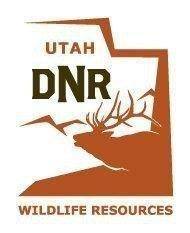Evidence of the parasite that causes whirling disease has been found in Strawberry Reservoir.
As part of testing they do every year, fish pathologists with the Division of Wildlife Resources tested 60 kokanee salmon collected by biologists at the reservoir this fall. Spores from the parasite were found in two of the 60 salmon.
Whirling disease (WD) doesn’t harm people. But once it develops, it can be fatal to small trout and salmon. Some of the fish that contract the disease swim in a whirling motion before they die.
Even though the parasite that causes WD has been found in the popular reservoir southeast of Heber City, DWR biologists say Strawberry should remain one of the country’s best trout fishing waters. “There is life after whirling disease,” says Roger Wilson chief of the DWR’s Aquatic Section. “The disease is not a fatal blow to the trout fishery at Strawberry.”
Wilson says the DWR anticipated that WD would eventually find its way to Strawberry. “We’re already taking steps to address the situation,” he says.
Wilson is optimistic about the future of the fishery for three reasons:
- WD mostly affects small trout. “As trout grow from fry to fingerling size,” he says, “the chances of developing clinical signs of the disease diminish rapidly.” Most of the rainbow and cutthroat trout currently stocked into Strawberry are a minimum of 8 inches long. “WD should not affect these fish,” he says.
- Most of the rainbows currently stocked into Strawberry are a WD-resistant strain known as the Harrison-Hofer strain. Because of the recent WD find, Wilson says the DWR will expand the use of this strain at Strawberry in the future. “Harrison-Hofer rainbows have been shown to develop much lower infection levels than other rainbow strains,” Wilson says.
- Studies have shown that Bear Lake cutthroat trout—the type of cutthroats that are in Strawberry—are more resistant to WD than other cutthroat strains.
Kokanee salmon also a concern
Kokanee salmon, which are very susceptible to whirling disease, are the fish biologists are concerned about the most. Wilson is hoping, though, that what’s happened with kokanee salmon at Porcupine and Causey reservoirs in northern Utah will also happen at Strawberry.
Whirling disease has been in the two reservoirs for several years,” he says, “but the kokanee salmon in the reservoirs haven’t been greatly affected by it.”
Natural recruitment a concern
Another area biologists are concerned about is the natural recruitment of cutthroat trout and kokanee salmon in the reservoir.
(All of the rainbow trout in the reservoir are stocked by the DWR. Biologists also stock kokanee salmon and cutthroat trout into the reservoir, but the biologists also rely on the fish to naturally reproduce too.)
“Current levels of natural reproduction may be affected by the presence and the potential expansion of the parasite,” Wilson says. “However, current WD research has identified some tools that may help reduce WD spore loads.”
One of the most promising tools are tubifex worms that are resistant to WD. (Tubifex worms that are not resistant to the disease release triactinomyxons, an intermediate host of the parasite, into the water. These TAMs make contact with the fish, infecting the fish with WD spores.)
How did WD get into Strawberry?
WD was found several years ago in the West Fork of the Duchesne River. Water from the river eventually empties into Strawberry through the Strawberry aqueduct and collector system, a Central Utah Project feature. This is the most likely way the parasite made it into the reservoir.
The DWR made attempts to contain the parasite in the West Fork drainage. “We’re disappointed that WD is in Strawberry,” Wilson says, “but we’re not surprised. We knew it was only a matter of time. “Rest assured that we’ll continue to take the appropriate steps to ensure the continued quality of Utah’s most important cold water fishery.”

